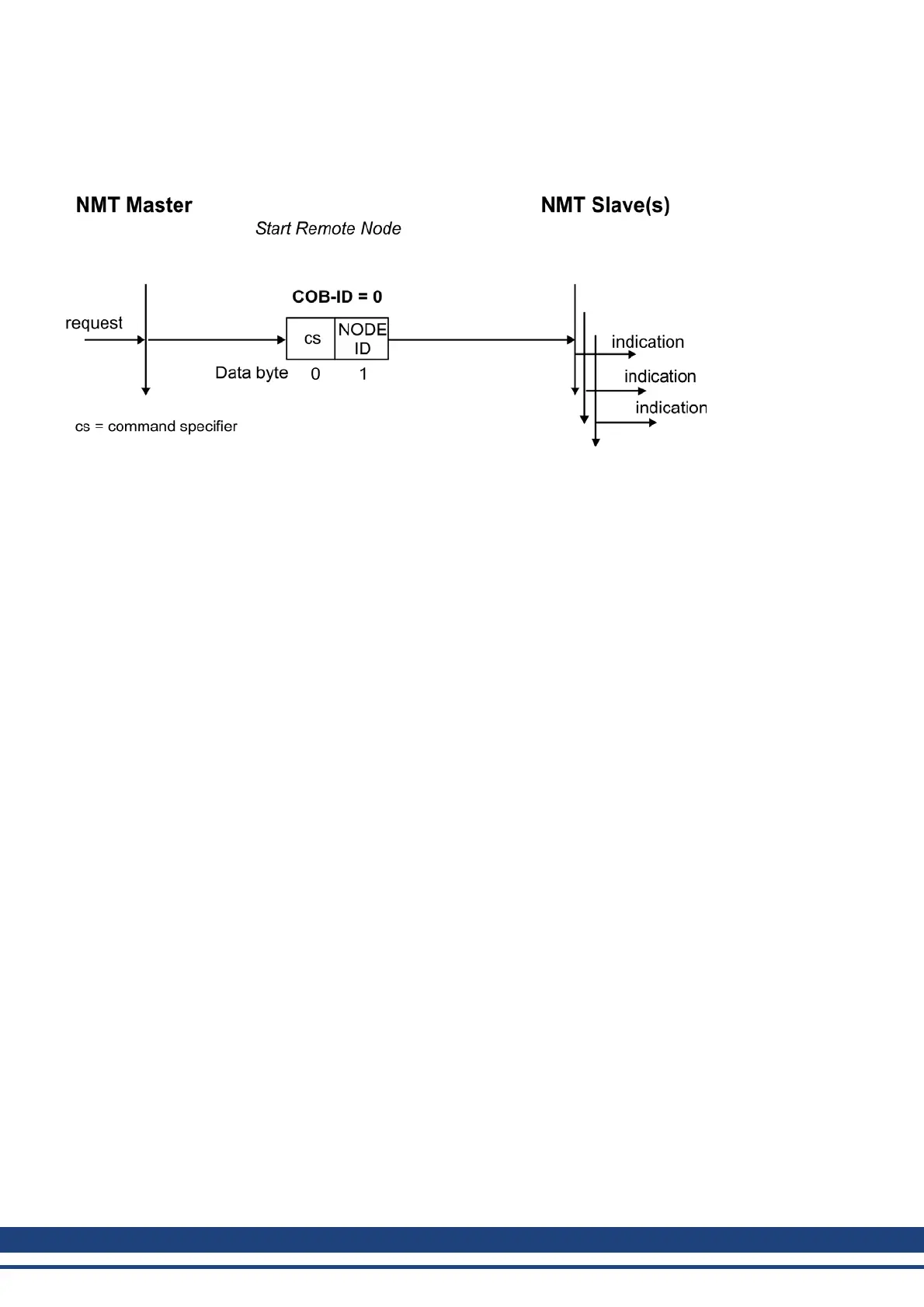AKD User Guide |
20.5.4.1 Network Management Objects (NMT)
The followind diagram describes the NMT telegram:
The drive supports the following network management functions:
cs=129, resetnode:
Causesacold-startofthedrive.ThisdeletesallparameterssavedintheRAMandloadsthevaluesstoredintheEEP-
ROM.
cs = 130, reset communication node:
Causes a stop of PDO-communication, gives a new bootup-message
cs = 1, start remote node:
Starts the CAN node. I.e. the PDOs of the drive are enabled for operation. From this moment, transmit-PDOs will
be transmitted under event-control, and cyclical process data operation can commence.
cs = 2, stop remote node:
Stops the CAN node, I.e. the drive no longer responds to any received PDOs or transmits any PDOs.
20.5.4.2 Synchronization Object (SYNC)
The SYNC object usually is used as a periodic Broadcast Object and provides the basic clock for the bus. SYNC
has a high priority, to ensure constant time intervals. The usage of this protocol is explained in the appendix from
page . You can use the SYNC object to start motion task of several axes simultaneously for example.
20.5.4.3 Time-Stamp Object (TIME)
This communication object is not supported by the AKD.
45 Kollmorgen | December 2010
